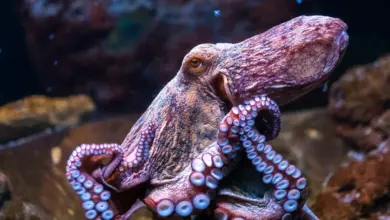Ever wondered what eats stingrays? The world’s oceans and rivers are home to stingrays. Stingrays have a flat disc-shaped body and long tails that are stingy. They can therefore be compared to skates and sharks.
Stingrays, in spite of their somewhat frightening appearance, are generally timid cats who avoid conflict. They don’t exist in isolation. This article discusses different animals that consume stingrays. It highlights the complexities of marine ecosystems and the survival strategies used by these amazing fish.
[ez-toc]
Sea Lions
Stingrays are eaten by several types of large fish such as barracudas and groupers. They are strong swimmers who can easily attack the stingrays. Ambush hunting is a particular characteristic of groupers. They hide and wait until an unwitting prey comes close to them before biting.
Predation by large fish on stingrays is an example of the interaction between different organisms in marine ecosystems. These fish are very important because they play a big role in the population control of these species.

Sharks
Sharks like hammerheads and lemons are more likely to eat stingrays. These sharks have evolved to be cunning hunters, with strong jaws and a keen sense of smell. Hammerhead sharks have an unusually shaped head that allows them to trap rays on the seafloor so they can easily bite into their flesh.
Sharks can always detect stingrays, as they can smell them and sense the electric fields that they emit from a distance. Even if some rays attempt to hide under sand, they are not always able to do so. This dynamic between predators and prey is common in marine ecosystems.
Other Stingrays
It has been reported that big rays will eat smaller rays. Cannibalism among animals is not uncommon in situations of food scarcity. The larger rays are able to overpower smaller individuals with their strength and mass, allowing them to gain access to nutrition.
Cannibalism in stingrays shows how competitive the marine environment can be since survival is often dependent on adapting and utilizing available resources. This behaviour also shows complex social structures in the populations of these fish.

Large Fish
Barracudas, groupers and other large fish species are known to feed on stingrays. These fishes can easily overcome stingrays because they are strong swimmers. Ambush hunting is well-known for groupers. They hide, wait, and then attack their prey.
The dynamic interactions that occur in marine ecosystems are illustrated by predatory fish which prey on stingrays. These interactions control the number of different organisms. This in turn maintains health and stability for such systems.
Birds
There have been reports that large birds such as ospreys or eagles hunt for stingrays near shallow coast waters. They use their keen eyesight to detect stingrays and then swoop in with their powerful claws. These birds’ ability to capture stingrays is a testament to the diversity of predators stingrays face in their habitats.
The interconnection between marine and terrestrial ecologies is illustrated by the predation of stingrays on birds. These relationships highlight the importance of conserving coasts that serve as vital feeding zones for marine and terrestrial predators.
Orca whales
Orca whales or killer whales as they’re commonly known, sometimes feed on stingrays. These intelligent mammals use sophisticated hunting methods to capture their prey. These intelligent mammals hunt in teams, where they capture and herd rays as well as other sea creatures. These animals have sharp teeth and a powerful jaw that helps them bite into the animals, despite their barbs.
Predation of stingrays by killer whales shows how marine food webs can be complex and hierarchical. Orcas, being the highest part of this hierarchical structure, play a major role in controlling organisms such as stingray populations.
Seals
Elephant seals are also stingray predators. These animals can swim quickly and are powerful enough to catch and eat rays. The nimbleness of these animals allows them to hunt rays faster in shallow water. These creatures eat stingrays as they provide them with protein and vital nutrients.
These interactions highlight the complexity of food chains in marine environments. Seals are important in maintaining ecosystem balance by controlling stingray populations and other prey species.

Humans
Humans are also predators of stingrays, who are hunted for sport or for trade. In some cultures, stingray meat is considered a delicacy and prepared in different ways. Commercial fishing operations sometimes result in the accidental capture of rays and other species by bycatch, which can have a significant impact on their population size.
Human predation on rays can lead to larger overfishing problems that impact marine ecosystems in general. Stingrays will not survive unless conservation efforts and sustainable fishing methods are combined.
Conclusion
Stingrays are an important part of marine ecosystems. They are full of fascinating facts. Although they have some defence mechanisms, stingrays are food for many other animals, including seals, sea lions, large fish, orcas, sharks, and humans. These predatory relationships are essential to maintaining the balance and health of the oceans.
These predators can reveal a lot about marine food chains, and why it is so important to protect these environments. We can ensure their survival on Earth by protecting them and their habitats.


